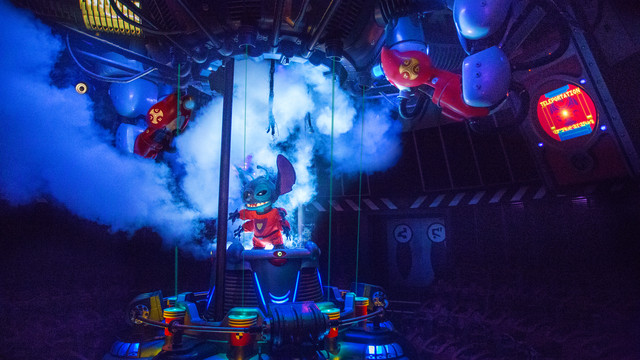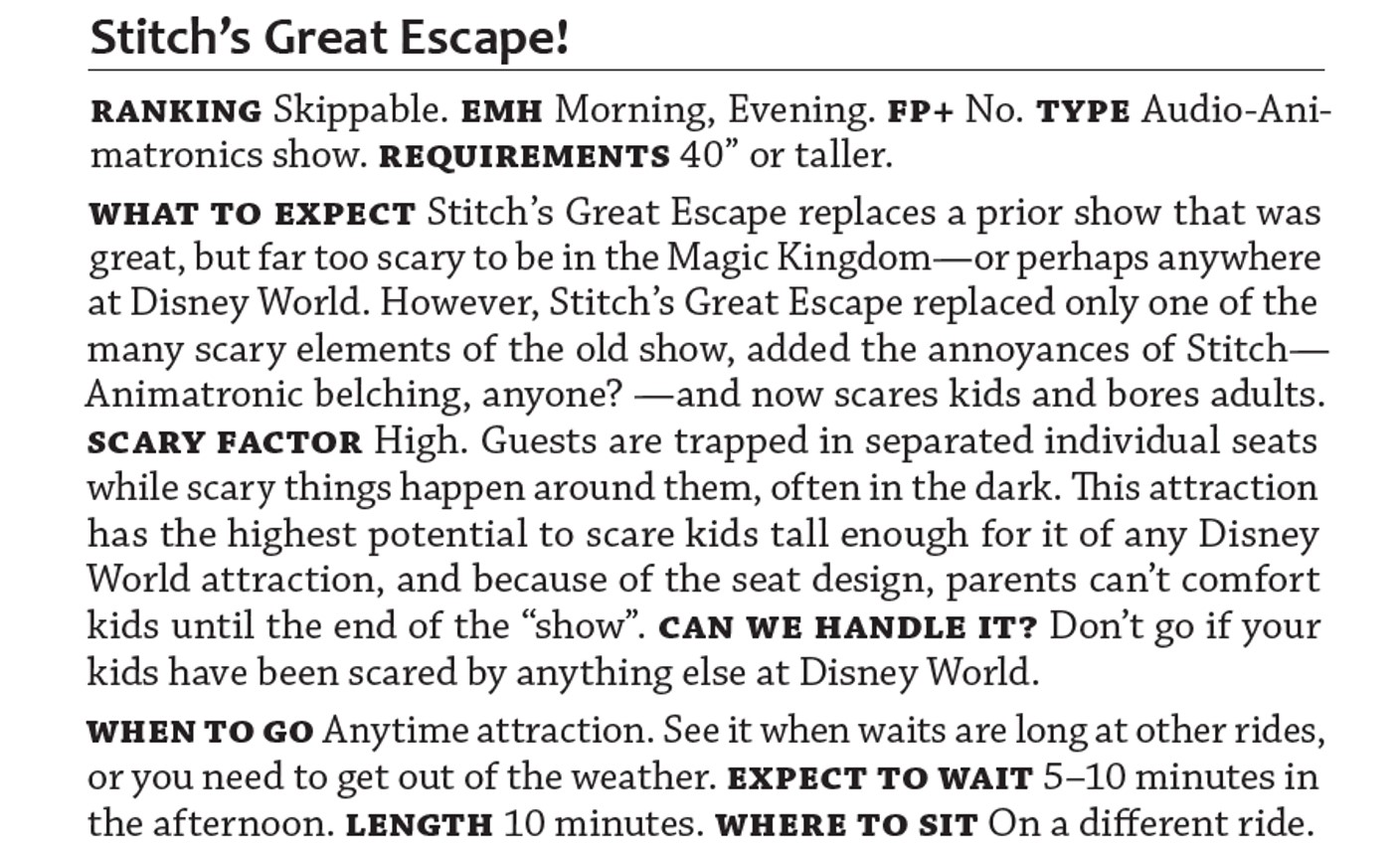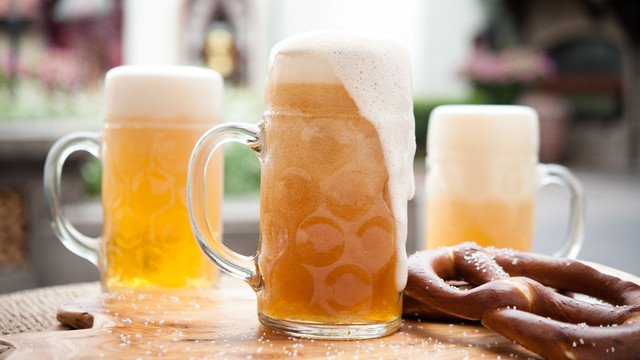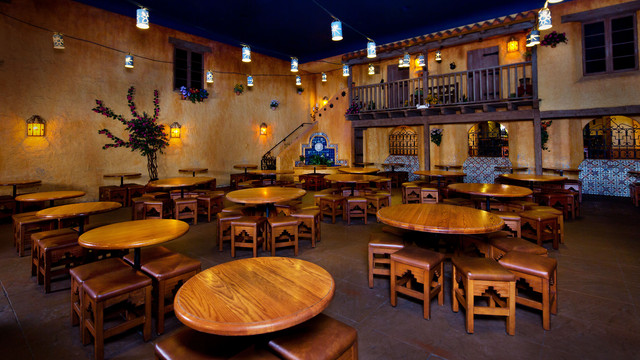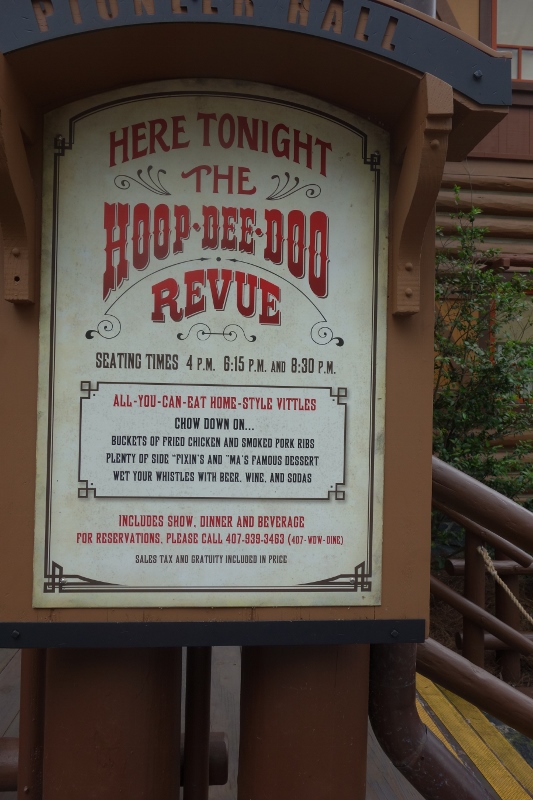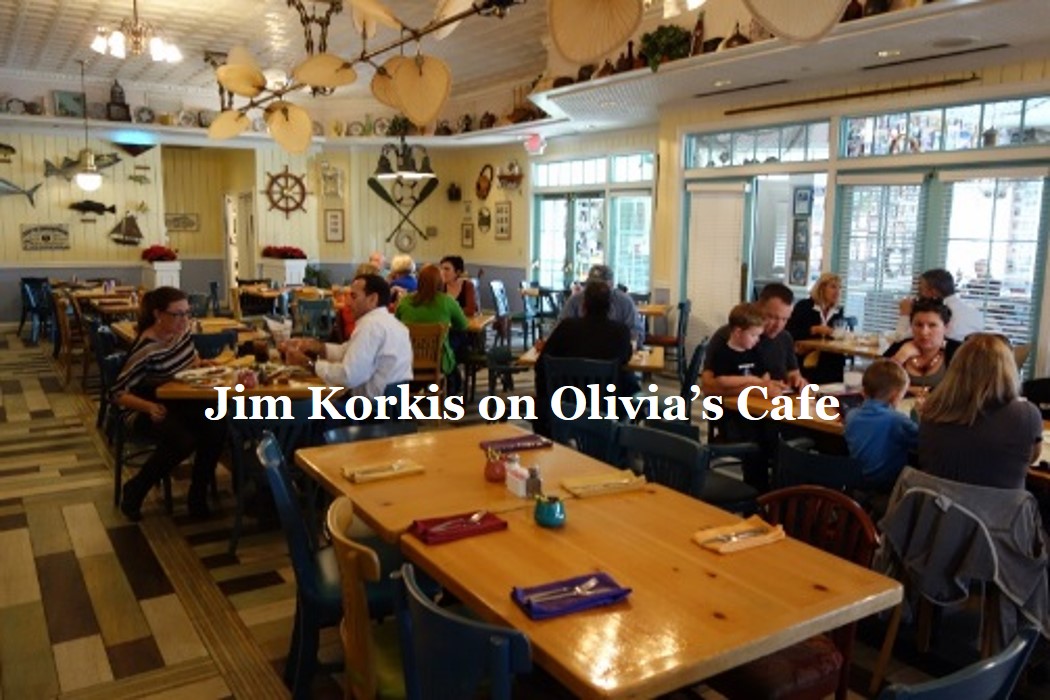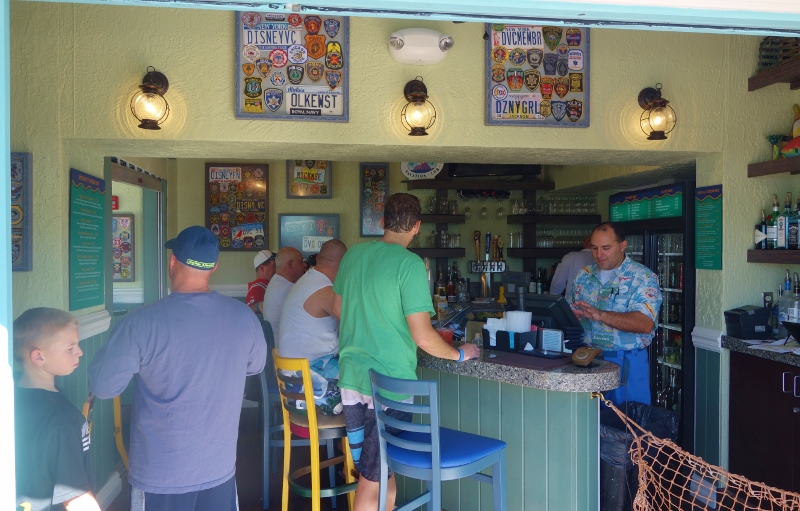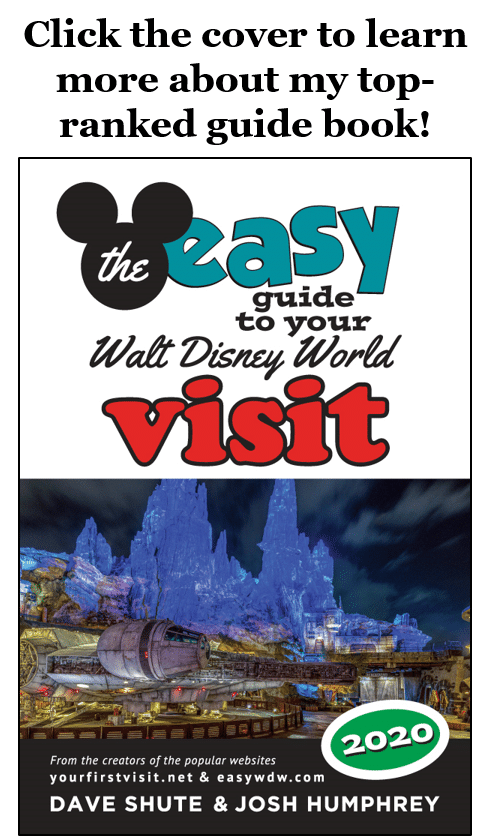Category — A Friday Visit with Jim Korkis
A Friday Visit with Jim Korkis: Tomorrowland and Stitch
Welcome back to Fridays with Jim Korkis! Jim, the dean of Disney historians and author of Jim’s Gems in The easy Guide, writes about Walt Disney World history every Friday on yourfirstvisit.net.
STITCH IN TOMORROWLAND
By Jim Korkis
The problem with Tomorrowland at the Disney theme parks was that the future always came much quicker than expected making the land look quaint rather than innovative no matter how often it changed.
In 1994 for the Disney Imagineers the solution was to make Tomorrowland “the future that never was.” It would be the future that resembled the one predicted in all the science fiction magazines and movies of the early Twentieth Century. It would be a timeless future that would never be out of date.
Entering Tomorrowland, guests are not just in the future but in a hometown community like Main Street U.S.A. that serves as a galactic space port.
In keeping with the theme that this is a city of the future, at the entrance is a huge sign from the Tomorrowland Chamber of Commerce that welcomes guests with its motto: “The Future That Never Was Is Finally Here”.
This is a metropolis where humans intermingle with aliens and robots and is the headquarters for the League of Planets. This main street of the future is officially known as the Avenue of the Planets. However, unlike in many cities, there are no shields at the entrance of Lions Club or Kiwanis organizations.
Instead, there are colorful emblem logos representing The League of Planets, The Loyal Order of Little Green Beings, the Galactic Association of Retired Aliens and the Sleepless Knights of the Milky Way.
All of these clever details exist to suggest that there is a much larger community than what guests will be able to see and experience during their visit. At one time there was even a poster for “Lunar Disneyland—The Happiest Place Off Earth”.
In 1995, the attraction building to the left of the entrance became the InterPlanetary Convention Center with additional advertising inside about upcoming community events and a demonstration of the latest in teleportation technology from X-S Tech.
The ExtraTERRORestrial Alien Encounter was a frightening interactive experience of what happens when people trust in untested technology.
In 2004, the building was converted into the Galactic Federation Prisoner Teleportation Center to handle “undesirables”. Using the same teleportation equipment as X-S Tech, guests see a demonstration of how convicted prisoners are teleported away from this city of tomorrow.
Inside is the infamous and mischievous Stitch from the Disney animated feature Lilo and Stitch (2002) that was made by Disney Feature Animation Florida. Of course, something goes horribly wrong and Stitch escapes but that comes as no surprise since the attraction is named Stitch’s Great Escape.
Not only has Stitch escaped to plague the guests in their seats but he has burst through the ceiling of the nearby merchandise shop, The Merchant of Venus, and the ceiling is covered with his distinctive footprints.
Along the sides of the shop walls are “faux” windows revealing Tomorrowland overflowing with Stitch’s many cousins, introduced to audiences in the Disney Channel television series and made-for-video sequels based on the original film.
The Merchant of Venus (a pun on Shakespeare’s “Merchant of Venice”) is laced with blue cable coils from the ceiling that connect to collection orbs atop the fixtures so quality goods from throughout the universe can materialize in these mini teleport chambers.
Stitch has even invaded Mickey’s Star Traders just down the block. A huge mural with seven hidden Mickeys encircles the ceiling. It details the escape from the city of a screaming Stitch as well as Jumba and Pleakley’s ship in hot pursuit besides some other surprises.
The Merchant of Venus and Mickey’s Star Traders merchandise shops theme into the concept that any community, even one in the future, would need a variety of businesses and services like shops and dining options for the residents and visitors.
* * * * *
Thanks, Jim!
Here’s the review of Stitch’s Great Escape from The easy Guide to Your Walt Disney World Visit 2017:
There are rumors that Stitch’s great Escape might be replaced with a Wreck-It-Ralph attraction…
Come back next Friday for even more from Jim Korkis!
In the meantime, check out his books, including Secret Stories of Walt Disney World: Things You Never You Never Knew, which reprints much material first written for this site, and The Vault of Walt: Volume 4, and his contributions to The easy Guide to Your Walt Disney World Visit, all published by Theme Park Press.
Follow yourfirstvisit.net on Facebook or Google+ or Twitter or Pinterest!!
August 26, 2016 No Comments
A Friday Visit with Jim Korkis: Germany at Epcot
Welcome back to Fridays with Jim Korkis! Jim, the dean of Disney historians and author of Jim’s Gems in The easy Guide, writes about Walt Disney World history every Friday on yourfirstvisit.net.
THE GERMANY PAVILION IN EPCOT’S WORLD SHOWCASE
By Jim Korkis
According to a 1982 Walt Disney World publicity release, “Although it was always certain that it would be included in World Showcase, Germany was chosen for Phase One for two important reasons.
“First, the Oktoberfest theme provided the perfect context for a large food facility, something vital to World Showcase. Second, Epcot Center planners knew they could count on enthusiastic German manufacturers and exporters to help get it off the ground.
“The authentic look and feel in the platz (plaza) and biergarten is a tribute to the ingenuity and skill of Disney Imagineers who went to Bavaria in search of just the right architectural features to use in order to convey that Old World ambiance.
“Rather than construct precise replicas of anything they saw over there, Epcot Center designers adapted German structures to fit the scale and serve the needs of World Showcase.”
For instance, to create the imposing castle fortress façade at the back of the pavilion, the Imagineers combined parts of the Eltz Castle on the Mosel River and of the Stahleck Castle on the Rhine. The platz includes architecture from the 12th to the 17th century from a variety of regions.
The statue of St. George in the center square resembles the one on top of a fountain in the city of Rothenburg ob der Tauber. Disney’s doppelganger is made of fiberglass that was treated to resemble the stone of the original. The statue is on a fountain guarding the water because according to legend the dragon that the knight slew had made a nest in the city’s water supply.
The Glockenspiel clock tower was designed specifically for World Showcase although influenced by the designs of clock towers in Martinstor and Freiburg. Every hour two figures of Hummel children appear to ring the bell. The melody that plays was composed just for the pavilion. A wooden rooster, flapping its wings, appears briefly over the top of the clock face to reference German cuckoo clocks.
The walls of the biergarten were inspired by the walls of Rothenburg, which were built during the 14th and 15th centuries. The Imagineers rearranged elements to create the interior space for a much larger facility than any actual German beer hall that ever existed.
Octoberfest celebrates the October 1810 marriage of Crown Prince Ludwig of Bavaria to Princess Therese. Today, that celebration continues for sixteen days from late September through early October.
The original interior design on the left hand side of the pavilion was meant to guide WDW guests through a German house.
The Weinkeller with its racks, low ceilings and tile floor resembles a basement. Next door, the journey continues into the kitchen with shelves and cabinet designs suggesting that location. The next doorway leads to the living room where Christmas is being celebrated. For many decades, the next shop was the Glas und Porzellan where Hummel figures were sold.
Since this is where the artist would work, it needed the best light so was in the attic and Imagineers even went so far as to include floor boards that would squeak beneath the feet of the guests.
To ensure authenticity, five or six times a year, artisans from Goebel would spend a few weeks in the shop molding and painting Hummels and observing the overall operation.
Phase Two, never completed, was to include according to the press release, two more additions: “German Rivers ride-through, guests will learn about German history and culture as they cruise down a course which simulates Germany’s most picturesque rivers and takes them past castles, industrial centers, and recreational sites.
“With Medieval relics, an impressive show, and travel agents ready to make all the arrangements, the Tourism Center will entice our guests to visit the real Germany.”
* * * * *
Thanks, Jim! And come back next Friday for even more from Jim Korkis!
In the meantime, check out his books, including Secret Stories of Walt Disney World: Things You Never You Never Knew, which reprints much material first written for this site, and The Vault of Walt: Volume 4, and his contributions to The easy Guide to Your Walt Disney World Visit, all published by Theme Park Press.
Follow yourfirstvisit.net on Facebook or Google+ or Twitter or Pinterest!!
August 19, 2016 1 Comment
A Friday Visit with Jim Korkis: Pecos Bill Tall Tale Inn and Café
Welcome back to Fridays with Jim Korkis! Jim, the dean of Disney historians and author of Jim’s Gems in The easy Guide, writes about Walt Disney World history every Friday on yourfirstvisit.net.
PECOS BILL AT THE MAGIC KINGDOM
By Jim Korkis
The Mile Long Bar was originally in Frontierland from October 1971 to January 1998 at the exit of the Country Bear Jamboree.
The eatery was named for its use of mirrors that created the illusion of visually extending the actual length of the bar. Next door, the Pecos Bill Cafe had been part of the Magic Kingdom landscape since 1971. A much-needed expansion effort in 1998 incorporated the adjacent Mile Long Bar into the café and added indoor seating.
The location was re-dubbed the Pecos Bill Tall Tale Inn & Café, with a framed picture of Disney’s animated cartoon version of Pecos Bill just above the fireplace. The newly designed quick serve area was meant to invoke restaurants like Planet Hollywood (which opened at Disney in 1994) and Hard Rock Café (Hard Rock Live opened in 1999 in Orlando next to the Hard Rock Café) where authentic celebrity memorabilia decorated the walls.
To help explain the concept, the Imagineers posted the back story on a piece of faux stretched rawhide near the entrance:
Considered by many as the meanest, toughest, roughest cowboy of them all, Pecos Bill has been credited for inventing all things western, from rodeos to cowboy dancing, to spurs, hats and lassos. He can draw faster, shoot straighter and ride a horse harder than any man alive. Unfortunately, we don’t know when and where he was born, just that he was raised by coyotes and that his name comes from the river in Texas.
Over the years, Pecos Bill along with his trusty horse, Widowmaker, have made quite a name for themselves forging new trails and taming others. Legend tells us several tall tales, like the time Pecos Bill jumped on a powerful twister and road it like a bucking bronco. Then there was the time when Pecos Bill dug out a path to create the Rio Grande river during a severe drought that hit his beloved Texas. And then there was the day Pecos Bill was so bored he took his handy six-shooter and shot out all of the stars in the sky except for one. That’s why they call Texas the “Lone Star State.”
In 1878, with the encouragement of his friends, Pecos Bill decided to open his own watering hole, a restaurant whose motto very much reflects its one-of-a-kind owner. “The tastiest eats and treats this side of the Rio Grande.”
Pecos Bill called it the Tall Tale Inn and Café and it quickly became a popular hangout for some of his legendary friends. As time went by, it became a tradition when each friend paid a visit they would leave something behind for Pecos Bill to remember them by. As you can see from the articles and artifacts that don the walls, many of which carry inscriptions, Pecos Bill had some mighty impressive friends. Seems that every trail eventually led to the Tall Tale Inn and Café.
Scattered throughout the location are Buffalo Bill’s boots, a giant axe belonging to Paul Bunyan, Johnny Appleseed’s tin pot-hat, Kit Carson’s scouting tools, Davy Crockett’s satchel and powder horn, John Henry’s hammer, Jim Bowie’s famous knife and Slue Foot Sue’s spurs and gloves.
Davy Crockett’s fictional companion from the Disney television series, Georgie Russel left behind a hand-written version of Davy’s encounter with Big Foot Mason.
One item that sometimes puzzles guest is a display of a black mask and a silver bullet but no identification plaque leading people to ask the famous question, “Who was that Masked Man?” Obviously, the answer is the Lone Ranger and at the time of its installation, Disney did not have the rights to the character.
There was a Disney connection with the character. Jack Wrather who owned the Disneyland Hotel also owned the rights to the Lone Ranger and in the early years of Disneyland allowed actor Clayton Moore garbed in his full television costume to visit Disneyland for publicity purposes including riding the Mark Twain steamboat with children.
The western end of the building shifts into the more realistic Spanish-influenced settings of the Southwestern United States to create a smooth transition into Adventureland’s Caribbean Plaza, with its adobe walls and Spanish tile roofs.
* * * * *
Thanks, Jim! And come back next Friday for even more from Jim Korkis!
In the meantime, check out his books, including Secret Stories of Walt Disney World: Things You Never You Never Knew, which reprints much material first written for this site, and The Vault of Walt: Volume 4, and his contributions to The easy Guide to Your Walt Disney World Visit, all published by Theme Park Press.
Follow yourfirstvisit.net on Facebook or Google+ or Twitter or Pinterest!!
August 12, 2016 No Comments
A Friday Visit with Jim Korkis: Hoop-Dee-Doo Revue
Welcome back to Fridays with Jim Korkis! Jim, the dean of Disney historians and author of Jim’s Gems in The easy Guide, writes about Walt Disney World history every Friday on yourfirstvisit.net.
THE HOOP-DEE-DOO REVUE
By Jim Korkis
“Whoop-de-doo”, and its variant “hoop-de-doo”, is a popular old-fashioned expression meaning frenzied activity or excitement. That phrase became the cornerstone of one of Walt Disney World’s most beloved nighttime entertainment experiences, the Hoop-Dee-Doo Musical Revue.
The show opened June 14, 1974, and continues to be performed in Pioneer Hall at the Fort Wilderness Resort and Campground to this day.
It was inspired by the success of the South Seas Luau at the Polynesian Village Resort and the need to find a project for the Walt Disney World Fine Arts College Workshop that supplied an inexpensive and eager cast for the new show.
The musical was developed by Robert Jani, Ron Miziker, Tom Adair, Paul Suter and Larry Billman. It was a highly collaborative effort, including contributions from the original performers as well. Billman was the director and Forrest Bahruth was the choreographer.
The premise of the show is that a stagecoach of performers on their way to another engagement (and an actual stagecoach used to be positioned outside of Pioneer Hall to support that storyline) had broken down.
They come inside the dining hall to entertain while their stagecoach is being repaired and the guests enjoy an all-you-can-eat meal of fried chicken, ribs, strawberry shortcake and more between the corn-pone vaudeville acts.
Fort Wilderness Resort and Campground opened November 19, 1971. When Pioneer Hall officially opened April 1, 1974, it was called the Fort Wilderness Dining Hall. The area was intended to be used as a dining venue for breakfast and lunch as an extension of the adjacent Crockett’s Tavern.
At night there would be animal lectures and demonstrations from animals brought over from nearby Discovery Island. Guests would also be able to play games and perhaps enjoy some musical talent like a washboard band. In addition, a huge screen would show some of the True-Life Adventures documentary films made by the Disney Studio in the 1950s and 1960s.
Built with 1,283 hand-fitted Western white pine logs from Montana and 70 tons of rare ebony stone for pillars from North Carolina, the two-story building was modeled after a Northwest Territory Lodge from the late 1800s.
Walt Disney World had no expectations for the show other than trying to temporarily fill an operational need. In fact, many people involved in the show felt it would be cancelled in the first few weeks or simply cancelled after its initial eleven weeks when the students returned to school.
By the end of summer, it was such an unqualified success that the roles were staffed with professional performers beginning September 5, 1974.
Over the years, a few changes have been made in the original show. For instance, in the beginning and until 1979, it was apple pie and not strawberry shortcake that was served as dessert. As a result the song “Apple Pie Hoedown” was replaced with “Strawberry Short Cake Walk”.
However, the most significant change happened in 2011. The song “Hoop-Dee-Doo” (sometimes called the “Hoop-Dee-Doo Polka”) used in the show was composed by Milton DeLugg with lyrics by Frank Loesser, and was first published in 1950. When the song was used in the Hoop-Dee-Doo, the lyrics were rewritten to reflect the show, but the upbeat tune remained intact.
The only problem was that in the rush to put together a temporary patchwork show, it had not occurred to anyone at Disney to get proper clearance for the use of the song. When the situation came to light, during the late summer of 2011, the popular theme song was replaced with one written specifically for Disney that still included the phrase Hoop-De-Doo.
The Hoop-Dee-Doo Revue is the longest continuously running musical stage show in history after more than forty years and more than 38,000 performances — with no signs of stopping.
* * * * *
Thanks, Jim! And come back next Friday for even more from Jim Korkis!
In the meantime, check out his books, including Secret Stories of Walt Disney World: Things You Never You Never Knew, which reprints much material first written for this site, and The Vault of Walt: Volume 4, and his contributions to The easy Guide to Your Walt Disney World Visit, all published by Theme Park Press.
Follow yourfirstvisit.net on Facebook or Google+ or Twitter or Pinterest!!
August 5, 2016 No Comments
A Friday Visit with Jim Korkis: Disney Springs
Welcome back to Fridays with Jim Korkis! Jim, the dean of Disney historians and author of Jim’s Gems in The easy Guide, writes about Walt Disney World history every Friday on yourfirstvisit.net.
DISNEY SPRINGS
By Jim Korkis
Downtown Disney, which was three separate unconnected sections in terms of an overall story, has recently been re-imagined as a re-themed cohesive retail and entertainment venue now called Disney Springs that encompasses approximately 120 acres.
When the new plans were announced on March 14, 2013, Walt Disney World Imagineer Theron Skees, executive creative director of the project said, ” It’s kind of a unifying storyline that we felt would really reinvigorate the property and really give it an identity all of its own.”
With more than 900 springs, Florida has one of the largest concentrations of freshwater springs on Earth. A few springs gave birth to towns, including Silver Springs in Marion County, Green Cove Spring in Clay County, and De Leon Springs in Volusia County.
The Imagineering storyline is that Disney Springs also attracted its first settlers “more than a century ago” and, over the decades, the town continued to expand naturally into four distinct districts: Town Center, The Landing, Marketplace and West Side. The architecture of Disney Springs varies by district.
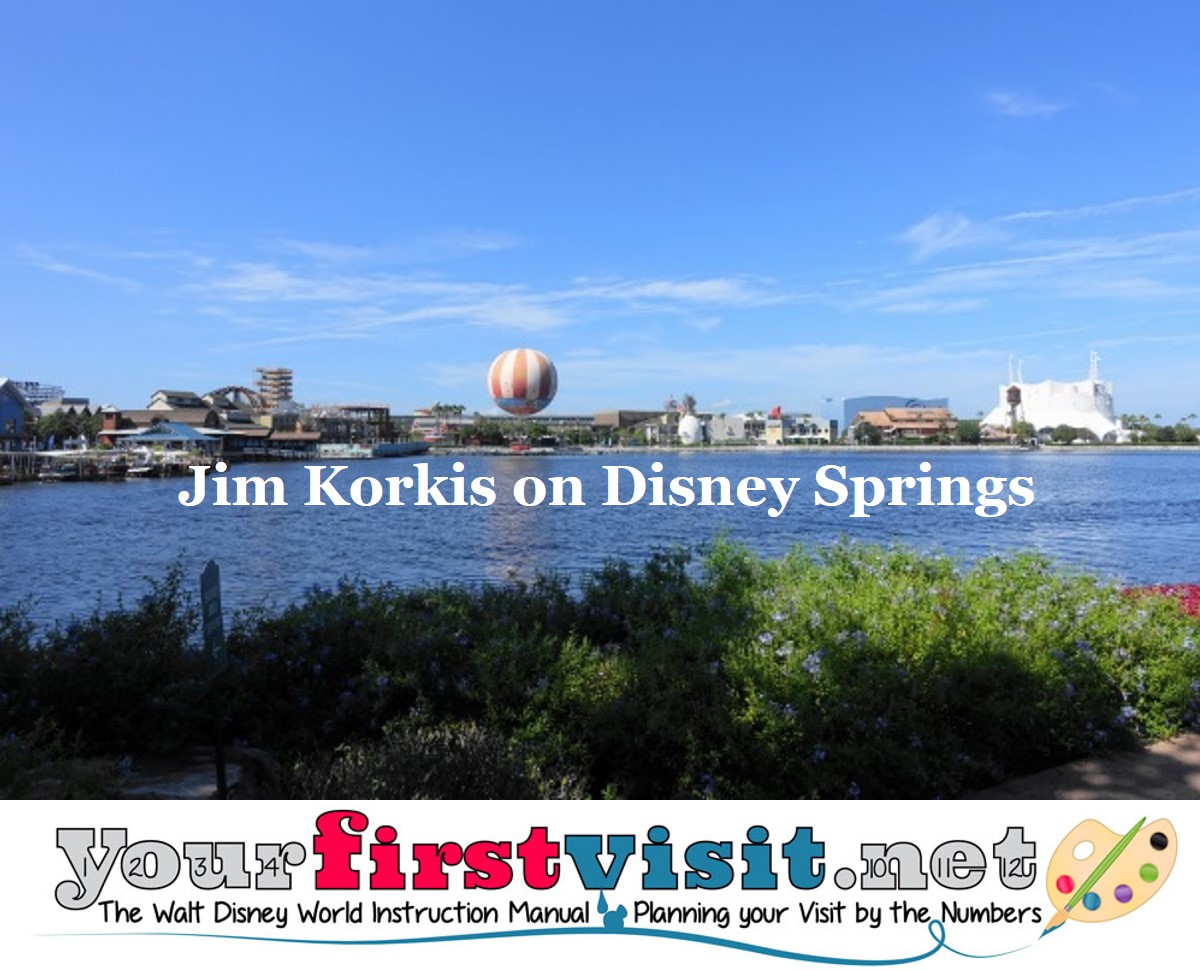
“The story is really of a small town that grew up around a natural spring,” Skees said. “It’s a story that’s really not unlike lots of small towns in Florida that grew up in the same kind of way. It has sort of a nod to the history of Florida as it developed and grew up over the years.”
As Briana Ricci, an Imagineer in charge of character paint and finishing, said about creating the actual springs, “We started with a base coat, followed by air compressor hoppers that poured out our accent colors which resulted in a color blend you would get in a nice water color painting. We only had a half hour or so before the cement dried completely and became as solid as a rock which made it all a challenge.
“We included colored glass, which was a very critical element because we have a limited palette, so we needed something to enhance and push our colors and depth, something bright and vibrant as well as long lasting with zero maintenance,” she said.
Natural elements that already existed in the area like oak trees, cypress trees and plants were saved and incorporated into the design. However, Imagineering also created some other elements like carving tree roots in the water so that the entire area felt integrated.
Disney Springs was inspired in part by Kismet, Florida, now a vanished town that was once located in the Ocala National Forest area. Before the early 1900s, it was a new community built around citrus groves near Alexander Springs. Kismet was where Walt and Roy Disney’s parents met and married, although they moved to Chicago not long afterward where Walt and Roy were born.
Skees stated: “When Walt came to Florida and bought the property to begin with, we love the idea that maybe his parents told him about the area and when it was purchased that this idea of Disney Springs was sort of central to it.”
The goal of the Imagineers was to capture the warmth and nostalgia of an old-fashioned small town neighborhood, in much the same spirit as Main Street U.S.A., from a simpler time but with an “upscale vibe” when it came to the stores and restaurants. They didn’t want just another shopping and dining location, but for guests to be immersed in an experience.
Tom Staggs, former Disney Chief Operating Officer and the former chair of Walt Disney Parks and Resorts, stated: “That sense of welcome, that sense of embrace, especially with this great center around The Springs, is going to be instinctive and natural for our guests.”
“We get asked … why we spend so much time on the storytelling, even in a place that isn’t a theme park. It guides our development and keeps us rooted in a sense of place.”
* * * * *
Thanks, Jim! And come back next Friday for even more from Jim Korkis!
In the meantime, check out his books, including Secret Stories of Walt Disney World: Things You Never You Never Knew, which reprints much material first written for this site, and The Vault of Walt: Volume 4, and his contributions to The easy Guide to Your First Walt Disney World Visit, all published by Theme Park Press.
Follow yourfirstvisit.net on Facebook or Google+ or Twitter or Pinterest!!
July 29, 2016 No Comments
A Friday Visit with Jim Korkis: Olivia’s Cafe at Old Key West
Welcome back to Fridays with Jim Korkis! Jim, the dean of Disney historians and author of Jim’s Gems in The easy Guide, writes about Walt Disney World history every Friday on yourfirstvisit.net.
OLIVIA’S CAFE
By Jim Korkis
The very first Disney Vacation Club resort opened on December 20, 1991 and was known only as Disney’s Vacation Club Resort up until January 1996. It was then renamed Disney’s Old Key West Resort to distinguish it from the newer DVC resorts.
The resort’s restaurant is Olivia’s Café, and according to the Imagineers, the back story of the restaurant was that Olivia Farnsworth, who was sixty years old, (“going on twenty”) lived in a small cottage along Turtle Krawl. She loved cooking, but did not have the money to open a restaurant of her own. She was very friendly and very proud of her cooking. Almost daily she would invite curious passers-by who smelled her cooking to come in to her dining room and pull up a chair to enjoy what she had prepared.
Soon, these visits became more and more frequent, both for the locals and for visiting out-of-towners as well. Olivia quickly ran out of room and everything else. People began bringing their own tables and chairs and even silverware and then left them there for their next visit. That’s why the silverware and the chairs in the restaurant are mismatched and add to a homey, family-type atmosphere.
The Imagineers wrote: “Soon she began doubling recipes, then double doubling. Then triple doubling, until the math got ugly. She pulled up more chairs, added more tables, and sat people on the porch, until the floor plan got all cattywhumpus. Finally, to the town’s great relief, Olivia made it official, cinched up her apron and hung out her shingle.”
The Imagineers even included “A Little Note from Miss Olivia” herself on the original menu along with her photo:
“The long and short of it is, I never intended to be any kind of big-time restaurant owner. I just happened to have this cozy cottage I called home and my kitchen just happened to be on the leeward side where aromas could wander out along Turtle Krawl. Seems like every time I turned on the stove, ‘specially early in the morning, folks would drop by with a friendly smile and a healthy appetite. I didn’t mind. I’d just pull another chair up to the table. Then one more chair, and one more chair…
” ‘Course, I admit I’ve sure had my share of helping hands from more than a few friends along the way. Miss Vickey, for instance, is my kind of people. She may not exactly fit into any proper pigeonhole, but she’s been a true friend to me. In fact, I owe the whole look of Olivia’s to Miss V’s artistic eye for coordinated color combinations.
“Then there’s Captain Wahoo. He often doesn’t have a nickel to his name, but his fish tales have kept me laughing through some lean times, and he’s always made sure I get first choice of the bounty his boat brings home to the Flats.
“There are lots of others who made Olivia’s what it is — like Frenchie, who’s sometimes a pest but always a pal, and Hank, and… well, I could go on, but I’ve a kitchen to keep up with and a passel of people to feed. So let me let you get on with your life with this closing thought — you’re always welcome at Olivia’s Cafe, where the food’s always good and the atmosphere’s always 100% Conch Flats.”
The Gurgling Suitcase Bar next door has a story behind it as well.
During Prohibition, people would come down to Key West to purchase illegal alcohol. They would pack it using their clothes to cushion the bottles so the bottles wouldn’t break in their suitcases. Law enforcement officers soon caught on to this practice and when they stopped people, they would pick up the luggage and shake it to see if it “gurgled”, indicating that there was liquid inside.
* * * * *
Thanks, Jim! And come back next Friday for even more from Jim Korkis!
In the meantime, check out his books, including Secret Stories of Walt Disney World: Things You Never You Never Knew, which reprints much material first written for this site, and The Vault of Walt: Volume 4, and his contributions to The easy Guide to Your First Walt Disney World Visit, all published by Theme Park Press.
Follow yourfirstvisit.net on Facebook or Google+ or Twitter or Pinterest!!
July 22, 2016 2 Comments

